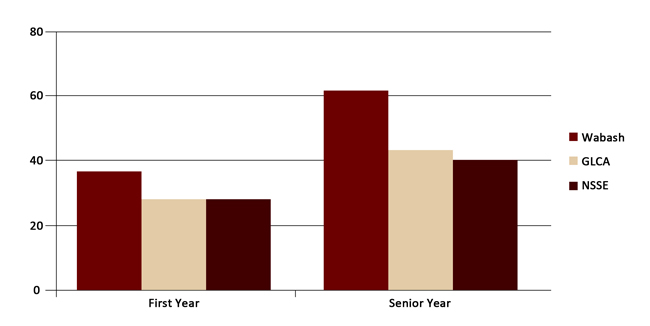
* Each benchmark is an index of responses to several NSSE questions. Because NSSE questions have different response
sets, each question’s response set was rescaled from zero to 100, and students’ rescaled responses were then averaged.
Thus a benchmark score of zero would mean that every student chose the lowest response option for every item, and 100
would mean every student chose the highest response to every item. Although benchmarks are reported on a 0-100 scale,
they are not percentages.
 As any student or parent knows, complementary activities outside the classroom can mean as much to an education as the in-class experience. Internships, community service, and cultural opportunities are just a few examples of ways to enrich a young man's education.
As any student or parent knows, complementary activities outside the classroom can mean as much to an education as the in-class experience. Internships, community service, and cultural opportunities are just a few examples of ways to enrich a young man's education.
- How often do students interact with peers who have a different point of view than their own?
* 85 percent of first year students frequently have serious
conversations with students who are different than themselves
in terms of religion, political, or personal beliefs.
- How often do students interact with peers from different racial or ethnic backgrounds?
* 77 percent of students frequently have serious conversations
with those of a different race or ethnicity.
- What percentage of students participate in community service?
* By the time they are seniors, 87 percent of students participate
in community service or volunteer work, and every freshman takes
part in a service project during their first week on campus.
